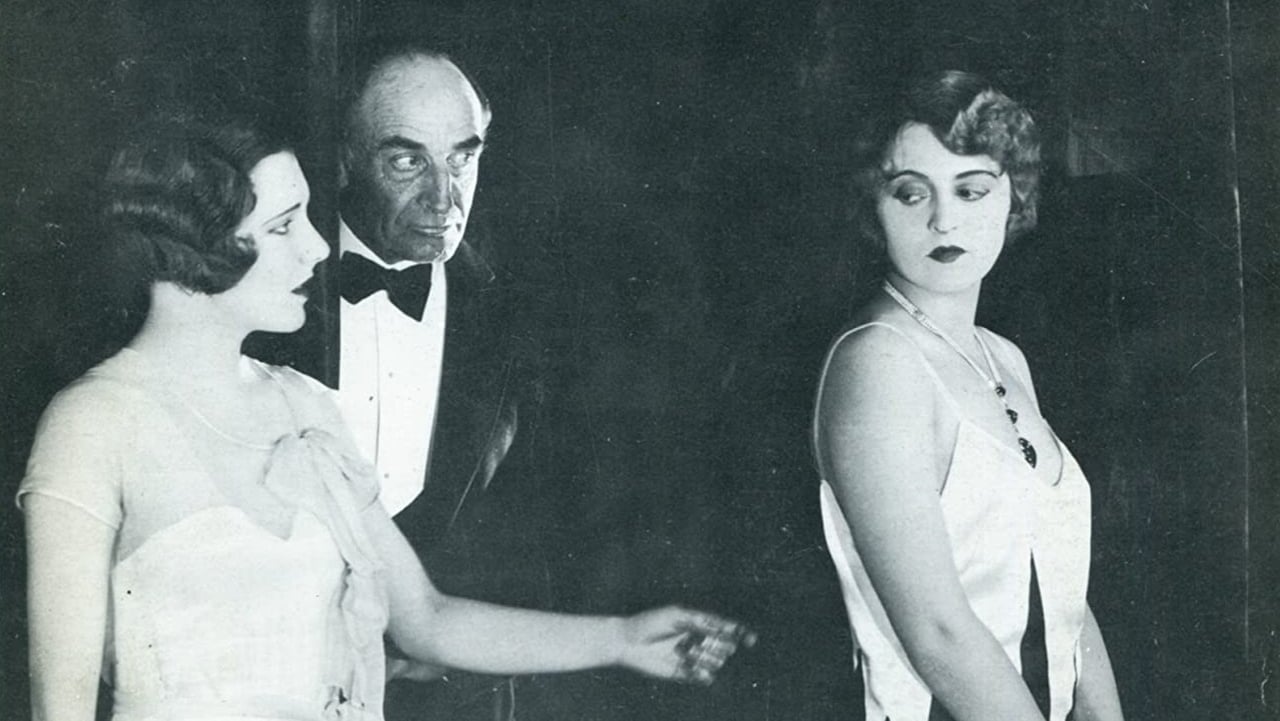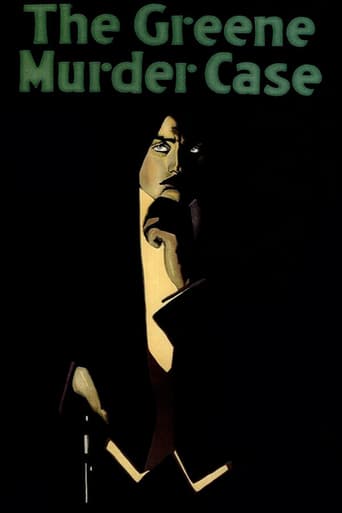



Thanks for the memories!
Terrible acting, screenplay and direction.
Purely Joyful Movie!
This film is so real. It treats its characters with so much care and sensitivity.
View MoreThe second Philo Vance film with William Powell in the central role was made in the same year as the first ("The Canary Murder Case"), but it is somewhat less of an antique. It's still often static, but at least there are a few panoramic shots of the house of the Greenes, and a more cinematic finale. Perhaps more importantly, the mystery is much more complicated than that of "Canary"; having read Maltin's comment about an obvious killer and remembering how easy it was to spot the killer in "Canary", I was certain I had it all figured out but I was fooled; I found the ending thoroughly surprising. Fans of Jean Arthur (she also appeared very briefly in "Canary") will be glad to know that her part is much bigger this time. **1/2 out of 4.
View MoreThe Greene family is abiding by a strange will that required them to stay in their mansion. The problem is that SOMEONE there is a maniac and is killing people! Can Philo Vance (William Powell) get to the bottom of this and prevent more killings?"The Greene Murder Case" played a lot better back in 1929 than it does today. Today, it seems very dull and much of this can be attributed to the way they made movies back in 1929. Like most films of the day, this one lacked incidental music and was very low energy--probably because actors were stuck standing near hidden microphones. Additionally, all too often, our hero, Philo Vance makes insane guesses and makes them seem true when he's really just pulling it out of thin air!.
View More...and how far his film persona has traveled since 1928's Forgotten Faces! In the silent era, Powell had played a heavy. But that distinguished sounding voice may not have been what the audience expected, but it was what they wanted once they heard it. So parts arrived for him that matched that distinguished voice.This film opens with the dysfunctional Greene family going over the terms of the late Mr. Greene's will that says the family must live in the estate for 15 years before anything more than living expenses is awarded to any of the heirs. All share equally, and if any die or decide to live somewhere else, their share is distributed to the others. They are 10 years into the 15 years, so New Year's Eve 1934 gives them all their money and their freedom. And none of them likes the other. Mrs. Tobias Greene is bedridden because she cannot walk. Ada (Jean Arthur) dotes on her, and Ada is always being taunted by Sibella Greene (Florence Eldridge) as an outsider since she is adopted. Sibella has some secret between herself and her mother's doctor.Then, one by one the members of the Green family begin turning up dead. The police call in Philo Vance to help, and lest the audience think it strange that a civilian is helping in police matters, several references are made to "The Canary Murder Case" in which Vance solved the crime. Vance keeps emphasizing that these things usually boil down to psychology, and that is his focus throughout the film - the psychology of the members of the Greene family, both the dead and the living. Did I mention that the servants share some in the will too and there are some very strange household servants? Eugene Palette plays Sgt. Ernest Heath of the police, and does the most interfacing with Vance. Paramount paired Powell and Palette quite a bit in the early years of sound and their contrast seemed to be very synergistic, both of them with trademark voices of a very different kind from one another.I'll let you watch and see how this all turns out. There are quite a few surprises in the plot. I'd recommend it.
View MoreAs a life long fan of murder mysteries in general and William Powell in particular, I was thrilled to finally get a chance to see this early sound Philo Vance mystery. A follow-up to Paramount's THE CANARY MURDER CASE (1929), this was adapted from "SS Van Dine's" third Philo Vance novel(originally published in 1928 to runaway business) and also stars the wonderful Eugene Pallette as Sergeant Heath and a young Jean Arthur in the ingenue role of Ada Greene.The intricate plot finds gentleman detective Philo Vance assisting his old friends District Attorney Markham and Sergeant Heath in a case of multiple and attempted murders at the Greene Mansion in New York's Upper East Side. It seems that someone is killing members of the Greene family, ostensibly for a stake in the large inheritance left by the long dead patriarch, Tobias Greene, whose fortune was accumulated (we come to suspect) by less than honorable means.I'll admit that, although anxious to finally see this film after reading about it for years, I wasn't expecting much. I had heard that the film was talky, creaky, and static, as many early sound productions seem to modern sensibilities. Perhaps it was because of these lowered expectations, but I was pleasantly surprised by some of the great stuff found here. The film abounds with wonderfully creepy atmosphere and a real sense of menace, and the climax, set in the rooftop garden of the formidable Greene mansion (a fantastic set, by the way), is thrillingly shot, with trick photography and a last minute-in the nick time-rescue.The screenplay is a faithful simplification of the Van Dine novel (the book's first two murder victims, for example, are compressed into one and the character of Julia Greene is jettisoned) and Powell's Philo Vance is much more likable than his literary counterpart. The identity of the murderer, while possibly surprising to the relatively innocent audiences of 1929, is fairly easy to spot by the more jaded modern viewer raised on scores of mysteries and taught to always suspect the least likely. This does not detract from the fun.Playing the part of Philo Vance was a huge boost to Powell's career, and allowed him to move from villainous heels to debonair man-about-town roles. After a parody appearance as the detective in 1930's PARAMOUNT ON PARADE, Powell played Vance twice more [in Paramount's THE BENSON MURDER CASE (1930) and Warner Bros. THE KENNEL MURDER CASE (1933)] before moving to MGM and forever being associated with the role of Nick Charles in THE THIN MAN series (an even BIGGER boost to his career!)Yes, the film is invariably hampered by the limitations of the early sound era, but once the modern viewer accepts these limitations, there's a lot to enjoy here.
View More